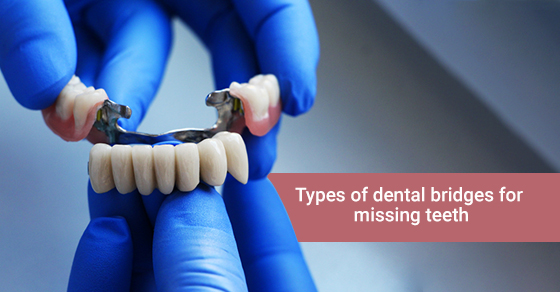
A dental bridge is a method used to anchor a replacement tooth to your natural teeth to keep it in place. Dental bridges are designed to fill the gap between your teeth with a replacement tooth or crown. A false tooth is placed in between two existing teeth and anchored in place. A gap in your teeth can cause significant damage to your gums and jaw, as it will change your bite pattern and could cause you to overcompensate in other areas to make up for the space in your teeth. By filling the space with a replacement tooth, a dental bridge can fill out your smile and return your bite to normal.
For those who have suffered dental injuries that have resulted in missing teeth, dental bridges have a number of benefits. First, they will fill the gap caused by missing teeth. This will help restore your smile. Bridges and implants are designed to match the size, shape, and colour of your natural teeth, so your smile will look exactly how it used to look. The replacement tooth will also fill in your bite pattern, improving your ability to chew and speak. By filling the gap in your teeth, you will also disperse the pressure of your bite to your entire jaw, which can help relieve tension caused by overcompensating in different areas because of gaps caused by injury. Finally, dental bridges can help prevent your natural teeth from drifting out of position.
If you have a remaining tooth on either side of the gap, your dentist can attach the bridge to these teeth, mounting it in place and keeping it from shifting. This process includes the installation of a dental implant that is often surgically attached to the jaw. This implant acts as an artificial root for your new tooth, keeping it anchored in place so it can hold up to daily biting and chewing. Your dentist will make a model of your teeth by taking impressions of your bite, ensuring the new tooth will have a comfortable, secure fit. After the first visit, your dentist will set you up with a temporary crown. At the second visit, you will have your new dental bridge installed. After taking the time to heal, you will be able to talk and chew like normal. Here is a breakdown of the four main types of dental bridges:
The most popular kind of bridge, traditional bridges consist of one or more fake teeth held in place by dental crowns. They are cemented to the adjacent teeth, holding your replacement tooth in place. These bridges are strong enough to replace molars, but they require teeth on both sides of the gap. As well, since the crowns must be cemented on top of your adjacent teeth to hold in your new tooth, much of the enamel must be scraped away to achieve a secure fit. These teeth will always need to be protected by crowns and will be more susceptible to cavities and gum disease.
Another option for replacing missing teeth are cantilever bridges. These bridges are similar to the traditional model, except they only require one side of the gap to have a natural tooth, rather than both sides. Since cantilever bridges only need one tooth for mounting, they are ideal for back molars or other complex injuries. However, they do not offer as much strength and durability compared to traditional bridges. Patients who opt for cantilever bridges are more likely to suffer fractured teeth or loosened crowns due to uneven pressure and tension on their crowns and their replacement tooth. It is a more versatile solution, but it can also result in further complications.
Maryland bridges are a much more conservative option compared to traditional bridges. These bridges use a metal of porcelain framework to hold the new tooth in place. The frame is bonded to the backs of the teeth on either side of the gap, holding the replacement tooth in place. Maryland bridges do not require crowns to hold the new tooth in place, so you do not need to file the enamel off your natural teeth. However, while they are more convenient and less-invasive, Maryland bridges offer less security. The strength of the bridge is only as strong as the adhesive connecting the bridge to your mouth, and this adhesive is more likely to fail over time compared to other mounting solutions. It may not be able to hold up to the bite force of your molars. As well, the metal framework causes more discomfort when biting, chewing, and talking, compared to traditional bridges that are mounted directly on your teeth.
Finally, the fourth type of bridge is known as an implant-supported bridge. This bridge can be used when you are missing more than one tooth in a row, which is common with dental injuries. Rather than being held in place by crowns like traditional bridges, this alternative is supported by dental implants installed directly into the jaw, which provides ultimate security and the most realistic representation of your natural teeth. This alternative is much stronger and more reliable than the other options, but it does require dental surgery to install the implants.
At Oakville Place Dental, our team of trained dental professionals has been providing dental care to families for years. We offer a full range of dental services including dental check-ups and cleanings, teeth whitening, dental implants, and emergency dental services.
For more information about our dental services or to book an appointment with one of our dental professionals, call us at 905-842-6030 or contact here.
 0 Comment
0 Comment